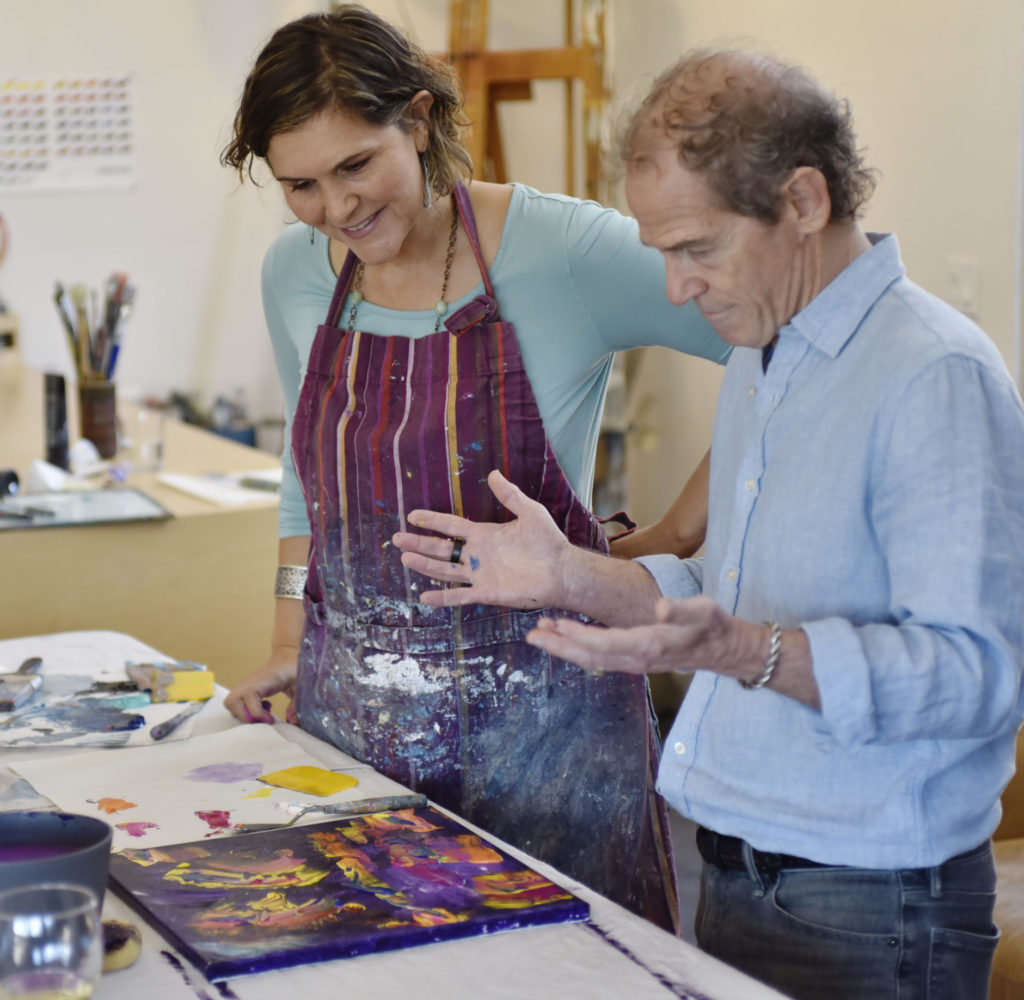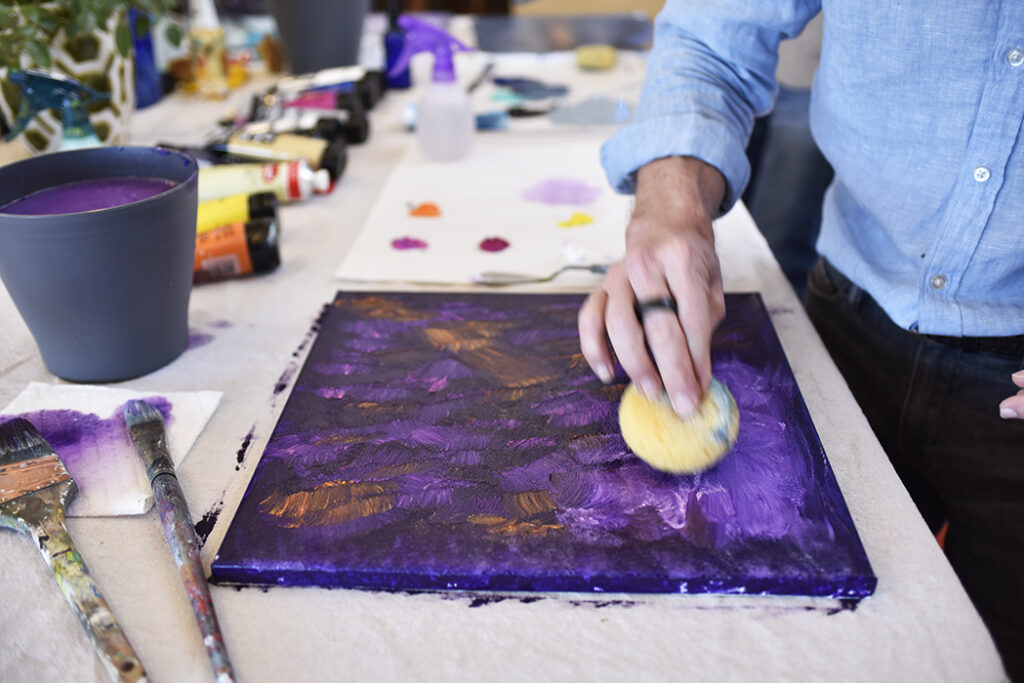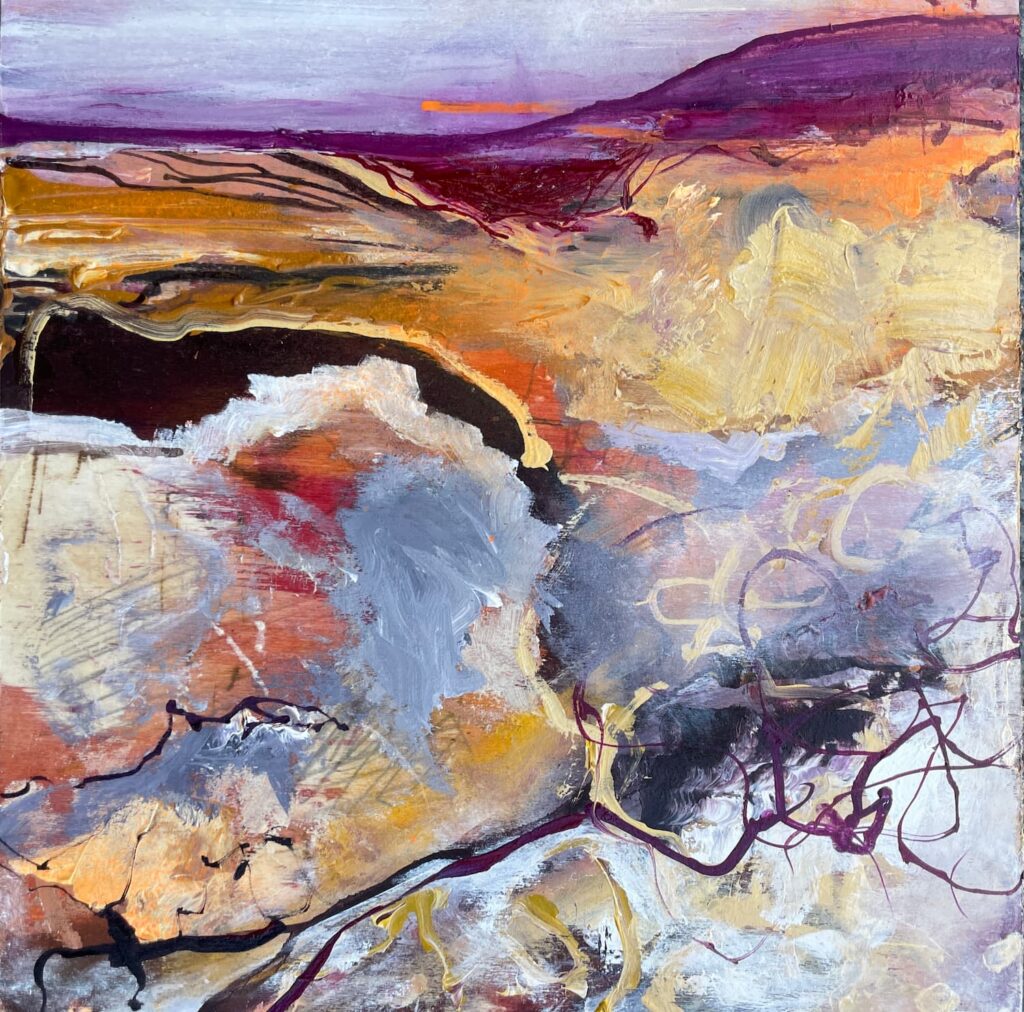Are you struggling to create abstract paintings that match your vision? You’re not alone. Many artists face challenges in bringing their abstract concepts to life. But don’t worry—there are proven strategies that can help you overcome these obstacles and create compelling, vibrant artwork.
With over 20 years of teaching experience, I’ve seen my students commonly make five key mistakes in their abstract paintings. Let’s dive into these errors and discover how you can refine your approach to make your painting process more enjoyable and successful.
Prefer to watch a video tutorial? Check it out here:
Mistake #1: A Negative Mindset
Firstly, it’s crucial to address your mindset. Many artists fall into the trap of self-criticism, labeling their works as “bad” or “terrible.” This negative mindset can be incredibly destructive. Instead, try to view your paintings as works in progress. Even seasoned artists experience moments of dissatisfaction with their work. Embrace these phases as part of the creative process and remind yourself that your painting simply “isn’t there yet.”

Changing your mindset can open the door to a more positive and productive painting experience. Remember that every brushstroke is a step toward your goal, and each mistake is an opportunity to learn and grow. The more you practice, the more you’ll understand your unique artistic process and style. Celebrate your progress, no matter how small, and remain patient with yourself.
Mistake #2: Not Studying Color
One of the biggest hurdles in abstract painting is mastering color. While some individuals have an intuitive grasp of color, most of us need to study color theory to avoid common pitfalls like creating muddy colors. Mixing too many colors or combining opposite colors on the color wheel can result in dull, unappealing hues.
To improve your work, try limiting your palette to two or three colors, plus black and white. This approach can help you create a more coherent and compelling color story.
Additionally, experimenting with color combinations can lead to surprising and delightful results. Try creating a series of color studies to see how different hues interact. Pay attention to how colors change depending on their context and what feelings they evoke.
Over time, you’ll develop a more nuanced understanding of color that will enhance the emotional impact of your abstract paintings. However, to truly master color, immerse yourself in the study of color theory. Make the time to learn it, and you’ll see a significant improvement in your work.
Mistake #3: Not Studying Composition
Equally important is the composition of your painting. A strong focal point is essential for guiding the viewer’s eye and creating visual interest. Without it, your painting can appear chaotic and unfocused. Consider the arrangement of shapes and lines in your work. Do they lead the viewer’s eye toward the focal point? Do they encourage exploration of other areas of the painting? Understanding design principles can significantly enhance the strength of your abstract compositions.
Think about balance, contrast, and rhythm in your compositions. How do the elements of your painting interact with each other? Are there areas of rest and areas of activity? By consciously organizing your compositions, you can create a sense of harmony and dynamism that captivates viewers. Practice sketching out different compositions before committing to a final design, and don’t be afraid to make adjustments as you go.
Mistake #4: Just Using Paint Brushes
Beyond traditional paint brushes, there is a world of tools available to help you create unique marks and textures in your paintings. Using only paintbrushes can sometimes result in predictable and uninspired marks. Experiment with unconventional tools like palette knives, sponges, or even household items to add variety and intrigue to your work. These tools can help you break free from conventional techniques and discover new ways to express your creativity.

For example, using a palette knife can create bold, impasto textures that add a three-dimensional quality to your work. Sponges and rags can produce soft, organic shapes and transitions. Even everyday objects like credit cards or combs can be repurposed to make interesting patterns and lines. The key is to remain curious and playful, allowing your creativity to lead the way.
Mistake #5: Not Enough Layers
Layers are another critical element in building a rich and engaging abstract painting. Multiple layers add depth and mystery, inviting viewers to look closer and discover the story behind your work. If your paintings lack layers, they might appear flat and uninteresting. Aim to build up several layers, experimenting with transparency and texture to create a more complex and visually appealing piece.

Start with a base layer to establish your composition and color scheme. Gradually add subsequent layers, allowing each one to interact with the others. Use glazes, washes, and dry brushing techniques to vary the opacity and texture. This process not only enhances the visual depth of your painting but also creates a sense of history and evolution within the piece. Remember, the layering process requires patience and experimentation, so take your time and enjoy the journey.
Tips for Continuous Learning and Inspiration
Finally, immerse yourself in the world of art. Visit museums and galleries if you can, or explore art history books and online galleries. Studying the works of other artists can provide inspiration and insight into different techniques and styles. Whether you favor abstract landscapes or another genre, observing good art can help you refine your own work and develop a more critical eye.
Pay attention to the details that catch your eye in other artists’ works. What do you find compelling about their use of color, composition, or texture? How can you incorporate similar elements into your own practice? By continuously seeking inspiration and learning from others, you’ll expand your creative horizons and find new ways to express your unique vision.
Embracing the Artist’s Journey
By being mindful of these common mistakes and actively seeking to improve, you’ll not only enhance your technical skills but also deepen your connection to your work. Whether or not you went to art school does not matter; you do not need to be a creative genius.
Remember, the journey of an artist is one of constant growth and exploration. With passion, drive, and a commitment to learning the fundamentals, you can create the paintings you envision. Embrace the process, keep experimenting, and most importantly, enjoy the act of creating. Your best work is always ahead of you.
Do you resonate with these tips? If so, I recommend attending my FREE 1-hour training on how to make your abstracts stronger with five pro tips. You can sign up for the training HERE.

ABOUT ANDREA CERMANSKI
I am an artist out of Santa Fe, New Mexico who has been painting for almost 30 years. I love to teach first-timers as well as experienced painters who need a creative reboot. My work has been displayed in several galleries around the country, and I have a Bachelor’s in Art History, a Master’s in Art Education, and had my work in a show juried by Judy Chicago. The idea of getting more people painting makes me light up as I want to inspire more people to express their creative selves and tap into a place of joy and calm.
WANT TO LEARN MORE?
- Subscribe and get one of the FREEBIES below!
- Ebook on How to Move From Representational Painting to Abstraction: 5 Transformative Art Lessons
- Take the Quiz: What Abstract Artist are you Destined to Be?
- Break Free and Breathe: Type-A Guide to Artistic Play. Powerful exercises to loosen you up to create better abstracts.
- Check out My Online Abstract Painting Course
- Read More Painting Tips Blog Posts
- Check out My Paintings & Art Prints for Sale
- Follow Me On YouTube, Instagram, or Pinterest

I began painting at 77 via your online course last September. After a few paintings I then did a ‘quiz’ to find out which abstract artist’s style mine most resembled. It was Joan Mitchell then, but now of course it’s changed. Where can I find that quiz again? Thank you (for everything) 🙏🏼Luna
Hi Luna, Ooh, it would be fun to see how your results change! Here it is! https://quiz.tryinteract.com/#/672be3e7c56882001545d55b